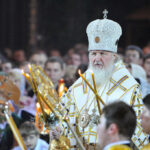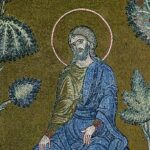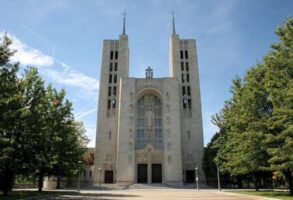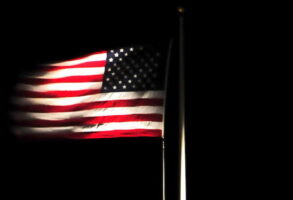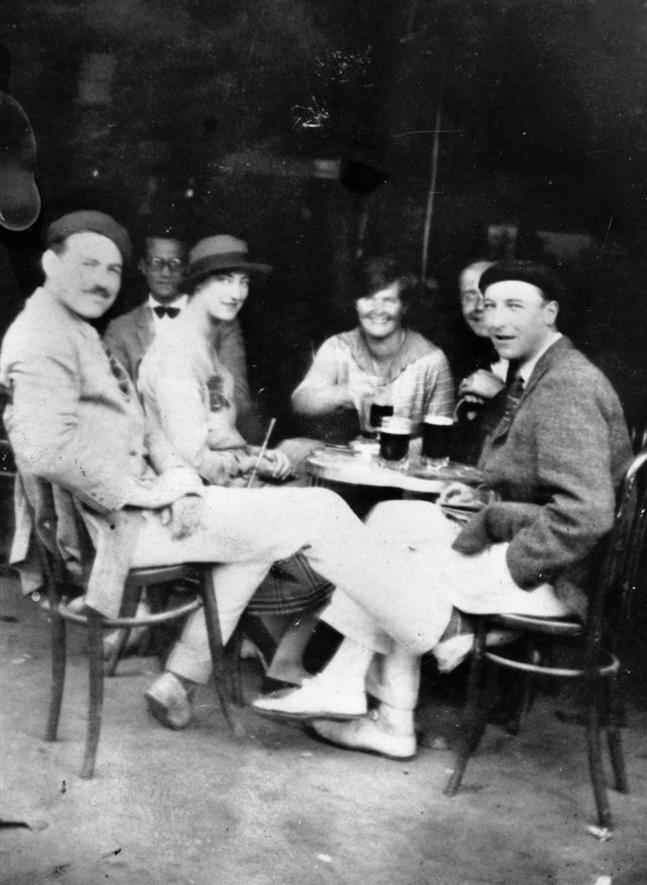
Published June 9, 2022
We live inside the envelope of our senses. Our grasp of reality is limited by what we can see, hear, touch, smell, and taste. This in turn shapes our imagination. But it’s absurd, C.S. Lewis argued, to assume that reality is restricted to what smart bipeds on a tiny planet at the edge of a modest galaxy can perceive. Science is a powerful tool, but it’s the product of limited creatures. It shares not just our strengths, but also our weaknesses.
We’re not gods. There’s an “outside” to the envelope of our natural lives that humans can only accept in faith or reject as fiction. And the latter route – repudiating the afterlife as a delusion – leads to the kind of ugly consequences Lewis captured in his novel, That Hideous Strength.
Even if we believe in an afterlife however, and of course we Christians do, our language reflects the deficiency of our senses. As a matter of doctrine, the Catechism of the Catholic Church, quoting Gaudium et Spes, teaches that we each have an immortal soul, the “seed of eternity [that] we bear in ourselves, irreducible to the merely material.” And eternal life involves “living forever with God in the happiness of heaven, entered after death by the souls of those who die in the grace and friendship of God.”
“Eternity” describes something outside our experience of time, as do words like Heaven and Purgatory. What would an indulgence of “10 years” off our “time” in Purgatory actually mean? Is Purgatory a place, a state, or some other form of purification? And what about Heaven itself? The standard, cartoon picture of paradise as an endless concert of harps and choirs is distinctly unappealing.
Happily, words reflect not just the deficiency but also the grandeur of human longings. Literature hints at the nature of Heaven in a way that speaks far more concretely to our senses than any credal text. Lewis comes close to the ecstatic joy of Heaven in the final pages his novel The Last Battle. In Lord of the Rings, describing Frodo’s final voyage to the Undying Lands, J.R.R. Tolkien writes that,
on a night of rain Frodo smelled a sweet fragrance on the air and heard the sound of singing that came over the water. And then it seemed to him that. . .the grey rain-curtain turned all to silver glass and was rolled back, and he beheld white shores and beyond them a far green country under a swift sunrise.
Even more compelling are Dante’s last lines in the Divine Comedy’s Paradiso, where the poet, having journeyed through Inferno’s terrors and Purgatorio’s hardships, is overwhelmed by the beauty of God’s beatific presence:
. . . the truth I longed for came to me,
Smiting my mind like lightning flashes bright.
Here ceased the power of my high fantasy.
Already were my will and my desires
Turned – as a wheel in equal balance – by
The Love that moves the sun and the other stars.
Of course, as fallen creatures, we have a special acquaintance with sin, and thus a vivid imagination about the content of Hell. In his play No Exit, Jean-Paul Sartre sees Hell as an otherwise comfortable but inescapable room inhabited by people who loathe each other; Hell is quite literally “other people.”
Scripture describes Hell as a lake of fire. Rod Serling imagines Hell as a casino with the gambler eternally condemned to win – thus sucking away any joy and exhilaration that come with risk and chance.
The most exquisitely lurid descriptions of afterlife punishment come from Dante’s skilled pen. Traitors are forever locked in ice. Suicides become trees pecked by hideous birdlike creatures. Heretics burn in tombs. Flatterers are buried in feces. Adulterers careen endlessly on the winds of passion. Other souls choke and drown in tar, or run endlessly through a torrent of burning rain, or roll monstrous stones, or tear at each other in endless conflict.
The imagery may be medieval, but its memory marks even the modern mind. There’s a reason Hell is rarely found on Expedia’s summer getaway list.
My favorite – I use that word very loosely – portrait of damnation, though, comes quite unintentionally from Ernest Hemingway, a man not known for his religious sensibilities. As a young man, I studied and often tried to ape the Hemingway style. He was a genius of the less-is-more craft. He knew that an economy of words, the right words, magnifies the impact of an author’s content.
This is obvious in his short stories like “The Sea Change,” and “The Short, Happy Life of Francis Macomber,” and his haunting, four-page play Today Is Friday.
But his masterwork, and the story he valued most, is “A Clean, Well-Lighted Place” (available online free here) It’s a story utterly without shrieks, brutality, or high drama – and also entirely without hope.
Set late at night in a clean, empty, 1930s Spanish café, Hemingway captures in some 1,500 words the despair of an entire age through the thoughts of an off-duty waiter with no place to go, and no one to go to, but reluctant to leave:
What did he fear? It was not fear or dread. It was a nothing that he knew too well. It was all a nothing and a man was nothing too. . . .Some lived in it and never felt it, but he knew it was all nada y pues nada y nada y pues nada. . . .Now, without thinking further, he would go home to his room. He would lie in the bed and finally, with daylight, he would go to sleep. After all, he said to himself, it is probably only insomnia. Many must have it.
Loneliness is the true taste of Hell, just as the love we have for God and each other is a foretaste of heaven. Which is why the Word became flesh and dwelt among us . . . .and why the greatest story of them all has a happy ending.
Francis X. Maier is a senior fellow in the Catholic Studies Program at the Ethics and Public Policy Center. Mr. Maier’s work focuses on the intersection of Christian faith, culture, and public life, with special attention to lay formation and action.
Image: Hemingway (left) in Spain with friends, 1925 [John F. Kennedy Presidential Library and Museum, Boston]
Francis X. Maier is a Senior Fellow in the Catholic Studies Program at the Ethics and Public Policy Center. Mr. Maier’s work focuses on the intersection of Christian faith, culture, and public life, with special attention to lay formation and action.





